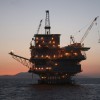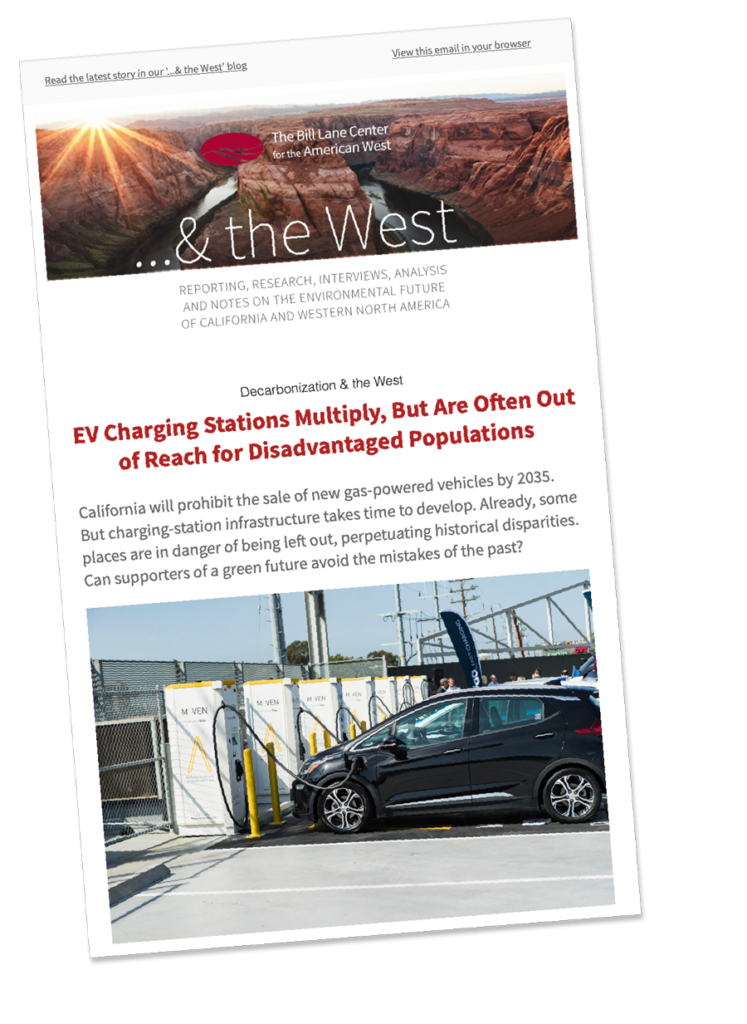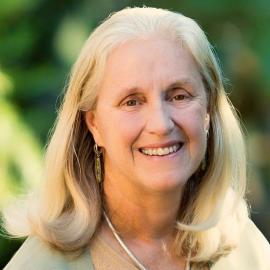
Running on Empty Pardee Reservoir, which is a major water source for East Bay populations, never filled in the spring of 1977, during California’s worst drought of the 20th century. East Bay MUD
As a major drought expands across the West, there is concern that it will rival the harsh drought of 2014. For Californians with longer memories, the fear is not of repeating 2014, when the state muddled through. The fear is repeating 1977, when water districts stared into the abyss; some almost ran out. “1977 caught us unprepared,” said Jeff Kightlinger, the general manager of Metropolitan Water District of Southern California, “In the generation since then we have tried to prepare” for what’s coming now. “Are the lessons learned going to be enough?”
What follows is an account by two former members of the 1977 staff of the East Bay Municipal Utility District about what it took to avoid disaster.
– FELICITY BARRINGER
The two driest years in California of the 20th century, back to back, were 1976 and 1977. We saw the lowest snowpack, lowest runoff, and lowest reservoir levels in the entire history of East Bay Municipal Utility District, one of the state’s largest water utilities.
Northern California water agencies had never gone through anything like this before; it was unclear whether they would have enough supply to keep water in the taps using existing infrastructure, or where to find new supplies if they had to. At EBMUD, heroic measures to save water and move water seemed to happen overnight in order to meet the challenge of a potentially devastating water shortage.
We have found the metrics marking the worsening current drought bear an eerie resemblance to the drought of 44 years ago. Back then, we were part of a staff that had to cope with an unprecedented crisis for the water supply serving more than a million people in Alameda and Contra Costa counties.
A Drought Year Like No Other… Until Now
Northern Sierra cumulative precipitation (8-station index)

Source: California Department of Water Resources
Bill Lane Center for the American West
It was also a crisis of confidence for policy makers, engineers, lawyers, and communicators who had grown complacent after decades of reassuring the public that a well-designed system that transported Sierra snowmelt to the East Bay was more than sufficient in the face of critical dry times.
Yet 1977 was a remarkable period of resilience, creativity, and resourcefulness by the staff of East Bay MUD and its 310,000 customer accounts in communities where 1.1 million people lived. They radically reduced water usage, immediately installed a new water supply infrastructure, and brokered essential partnerships up and down the state to meet the vital needs of people, business, and industry.
It worked. Water use in the East Bay fell by more than 35 percent. Creative partnerships among state and local water agencies and resourceful engineering bailed out systems facing possible disaster. And the agency’s work became the model for California drought response, not only for other water systems in 1977, but for subsequent years pummeled by dry spells, like the current one, that are recurring more and more frequently.
As Customers Grew, Total Usage Stayed in Check
Daily Water demand and number of customers for East Bay MUD, 1972-2012

Bill Lane Center for the American West
The Driest Period
The winter of 1975-76 was extremely dry, but EBMUD still wasn’t too worried by the annual April snow survey. Its board president expressed confidence that supplies were adequate, and that repeat dry years were unlikely. But it was pretty damned dry—the spring runoff in the Mokelumne River, the principal source of water for the Oakland/Berkeley/Walnut Creek area, was only one-fourth of average. The district’s Pardee Reservoir, supplied by the Mokelumne, never filled that spring and was at its lowest level since it filled the first time in 1930.
The district was established in 1924 to replace inadequate privately operated water supplies in the East Bay with a new source of water imported from the Mokelumne River in the Sierra, 100 miles away. It serves an area that extends from Crockett on the Carquinez Strait in the north down the Bay Shore through Richmond, Berkeley, Oakland and San Leandro to the Hayward border on the south, and includes Contra Costa County communities including Lafayette, Moraga, Orinda, Pleasant Hill, Walnut Creek and sections of Concord and the San Ramon Valley.
Water conservation was urged on customers, but the message didn’t take that first year: consumption reached record levels during 1976 in response to the lack of local rain in the winter and heat waves during the summer.
The following winter, 1976-77, was even drier. In February 1977 EBMUD’s elected board of directors finally faced the reality that water rationing was necessary and approved a 25 percent rationing target—the first time in the district’s history that water restrictions were imposed And after the annual April snow survey, the target became a 35 percent reduction in anticipation of a potential third dry winter.
Reducing Demand
Following the decision to impose rationing, EBMUD moved quickly on several fronts: reducing water use, of course; securing additional supplies; and partnering with other water systems to solve mutual concerns.
Water rationing was a huge news event since it was the first time it had ever happened in EBMUD’s experience, and the drought was the most severe in more than a half century. The situation seemed unprecedented; it was certainly beyond most people’s memories. The fairness and effectiveness of the details of rationing were endlessly debated both by customers and within the agency, but the fact that rationing was required was beyond dispute.
EBMUD was a well-regarded agency; its water was pure and safe, its rates were low, and up until 1977 its supplies were ample. It had built a reservoir of public trust that greatly aided the public’s response to save water.
In a time long before social media, long before mobile phones when the only new technology was the recent fax machine, the district relied on traditional means of communication to reach customers: news conferences, media interviews, public meetings, mass mailings, and sign boards showing targets and results week by week throughout the territory.
It distributed water conservation kits, including leak-detection dye tablets and plastic jugs to put in toilet tanks and brochures with handy hints, and staff in the five business offices fielded a crush of calls by staffing up and working overtime. The communications staff of six people ran exceedingly hard during 1977.
Although these communications tools would be considered old school now, they worked. Month-by-month consumption throughout the year was 30 to 40 percent lower than the prior year, and 90 percent of EBMUD’s customers used less than their rationing allotments. Average daily use fell from 220 million gallons a day in 1976 to 138 MGD in 1978. Lawns went unwatered, leaks were repaired, and residential irrigation was converted to drip systems and grey water. Industrial customers found creative ways to reuse process water, which actually led to greater efficiencies and cost savings.
Increasing Supplies

The South Bay Aqueduct. California Department of Water Resources
Conservation efforts were admirable. But the utility still needed more water. Where to find it, when the entire state was dry? EBMUD had a good card to play: its 1970 contract with the U.S. Bureau of Reclamation for American River water from the Central Valley Project. The contract had not been used; it was a hedge against future demand, challenged by environmental litigation, and depended on infrastructure that didn’t exist to deliver the water. But it represented a potential of 67 million gallons a day more if EBMUD could find a way to bring the water home.
The district’s engineers and lawyers figured out solutions on the fly. They worked out a deal with the Bureau to take the water from the Sacramento-San Joaquin Delta where the Mokelumne Aqueducts crossed Middle River, and got quick approvals from regulatory agencies.
A pumping plant cobbled together from spare parts and reallocated projects was built on the peat lands accessible only by barge. One of the three barrels of the aqueducts was pulled from Mokelumne service so it could deliver Delta water instead. Design and construction moved ahead simultaneously—they flew the plane as they were building it—as pile driving for foundations went forward while the hydraulics were still being determined.
The remarkable project was conceived, designed, and built in seven months. It was put into service in September 1977, ahead of what had seemed an impossible schedule and well short of the estimated two years it might have taken under “normal” conditions. If there had been a third dry winter, the district was now in much better shape to handle the needs of more than a million people.

The “three-barrel” Mokelumne Aqueduct, one of whose three pipelines water engineers modified in 1977 to transport water from the Sacramento-San Joaquin Delta instead of the bone-dry Sierra Nevadas. EBMUD
Partnering for Mutual Aid
EBMUD was not the only Bay Area water system in dire straits. The Marin Municipal Water District’s reservoirs, dependent entirely on local winter rains, were almost empty. And although the Contra Costa Water District had rights to a reliable supply diverted from the Delta at Rock Slough, the extremely low flows from a scant Sierra snowmelt meant its water was too salty to use.
EBMUD became a critical pivot point for both its neighboring systems through creative “water swaps” and shared use of infrastructure. The solution for Marin began with a deal with the Metropolitan Water District of Southern California, which voluntarily stopped taking some deliveries from the California State Water Project so that water could be reallocated to MMWD and other agencies.
The state then moved water designated for Marin through the South Bay Aqueduct to San Francisco’s Hetch Hetchy system, and from there to the Hayward water system. From Hayward, EBMUD took the water to serve its own customers in San Leandro and East Oakland, and credited that amount to Marin’s account.

An emergency water pipeline was built across the San Rafael Bridge in 1976 to supply Marin County. Marin Municipal Water District
In the meanwhile, Marin built an emergency pipeline across the Richmond -San Rafael Bridge to move water from the other end of the EBMUD system. This water system MacGyver began operations in June and involved the partnership and flexibility of six separate agencies to work. The legal effort, which in normal times might have taken decades to resolve, given the complexities of California water law, was done in a matter of days to meet the cold reality of running out of water in Marin.
The solution for maintaining Contra Costa’s water quality required taking another of EBMUD’s three Mokelumne aqueduct barrels out of service so that it could be used by the state and CCWD to divert higher quality water from Middle River seven miles over to Rock Slough. This plan was sufficient to dilute the saltier water at CCWD’s normal Delta intake to a more tolerable level when it began operating in June.
In a Water Emergency, Replumbing the Bay Area
Eight federal, state, regional and local water agencies worked quickly to forge creative partnerships during the 1977 drought crisis. These helped redirect water supplies and keep taps running in the Bay Area.

Sources: EBMUD; David Vossbrink and Robert Maddow; California State Water Resources Control Board; NASA; Natural Earth Data;
GEOFF McGHEE/BILL LANE CENTER FOR THE AMERICAN WEST
Lessons Learned
What EBMUD was able to do in 1977 showed that people, and governments, can move really fast when they have to. With the need glaringly evident and trust high, water users willingly stepped up to reduce their usage to make sure that supplies would be sufficient in the event of another dry winter.
Water systems and their lawyers put aside considerations of turf, authority, and precedents to serve their communities that faced serious emergency challenges. Regulatory agencies quickly consented to arrangements that normally would have taken years to iron out. And engineers and contractors solved complex design and construction problems so that water could continue to flow where it was most needed as quickly as possible.
But 1977 also showed that complacency about water in California is dangerous. Although we didn’t know as much about climate change a half century ago, we did learn that there is no such thing as a normal year for water. Floods and droughts are normal; average is abnormal. Building in resilience, alternatives, and buffers has become even more essential now.
As we look at the current drought in California, a final lesson is that we can’t wait to start water conservation and efficient management of supplies. Standby agreements for sharing among water agencies are necessary so we can pull them out for extraordinary times.
We weren’t really ready for 1977. Will we be ready for 2021? For a decades-long megadrought? Hoping for a wet year to save us is not a plan.
Robert Maddow is former General Counsel for EBMUD and partner with Bold, Polisner, Maddow, Nelson & Judson. He was a member of the EBMUD legal staff during the 1977 drought. David Vossbrink, former Director of Public Information for EBMUD, retired as Communications Director for the City of San Jose. He was a member of the EBMUD Public Information Office in 1977.
Edited by Felicity Barringer.
Read Next in …& the West
ExxonMobil Moves to Resume Offshore Oil Drilling in Santa Barbara County
The company’s billion-dollar offshore investment has been sitting idle since a 2015 oil spill. A new plan calls for oil trucks to take crude oil to inland refineries until a pipeline is built; environmental groups and local businesses oppose the plan.



























